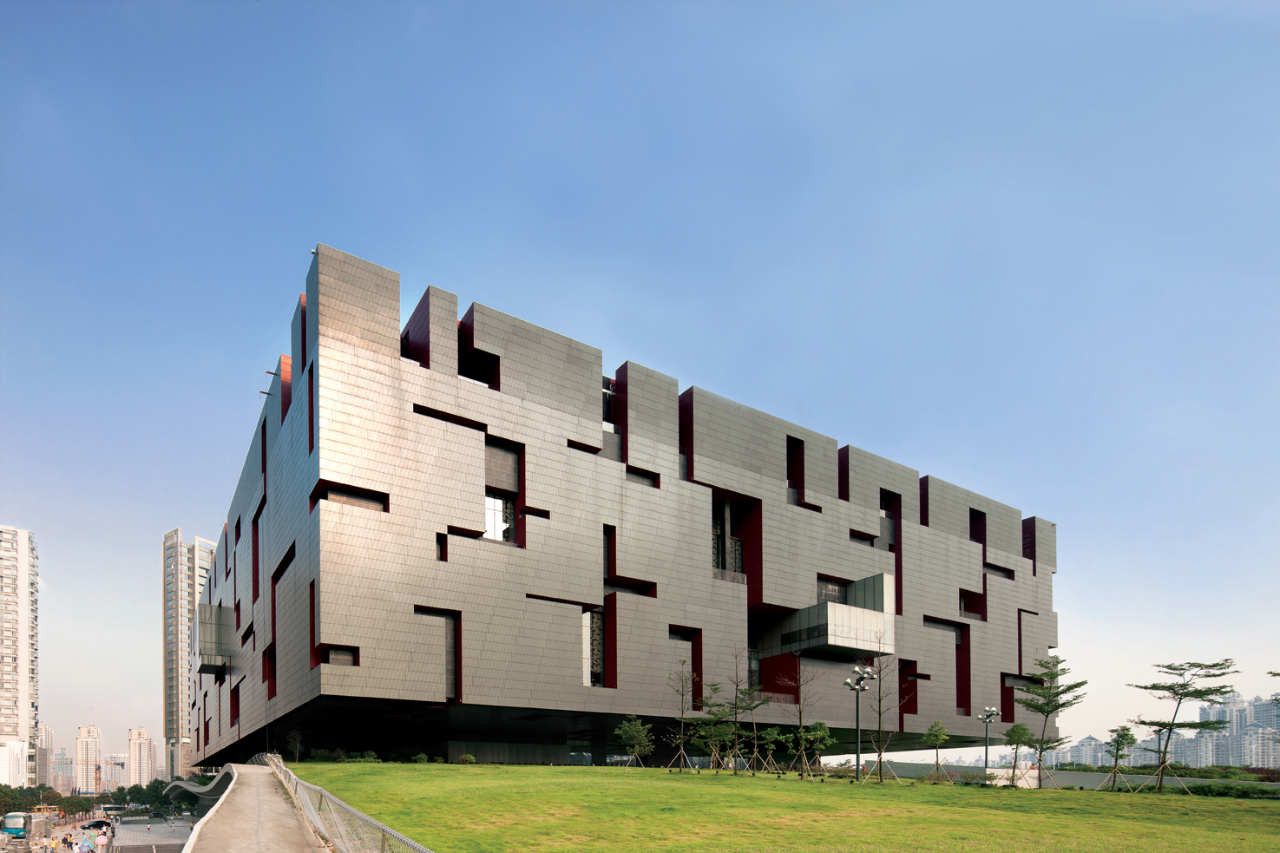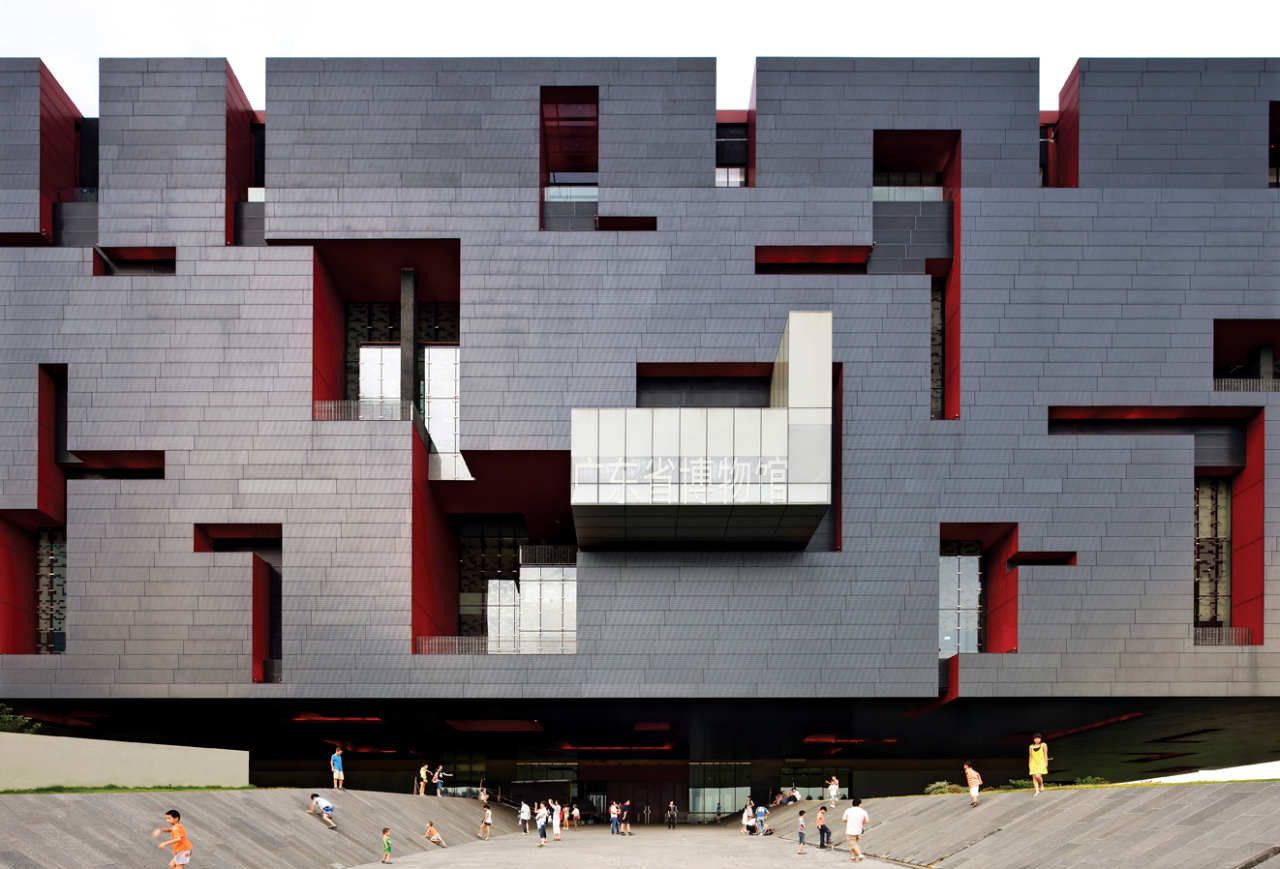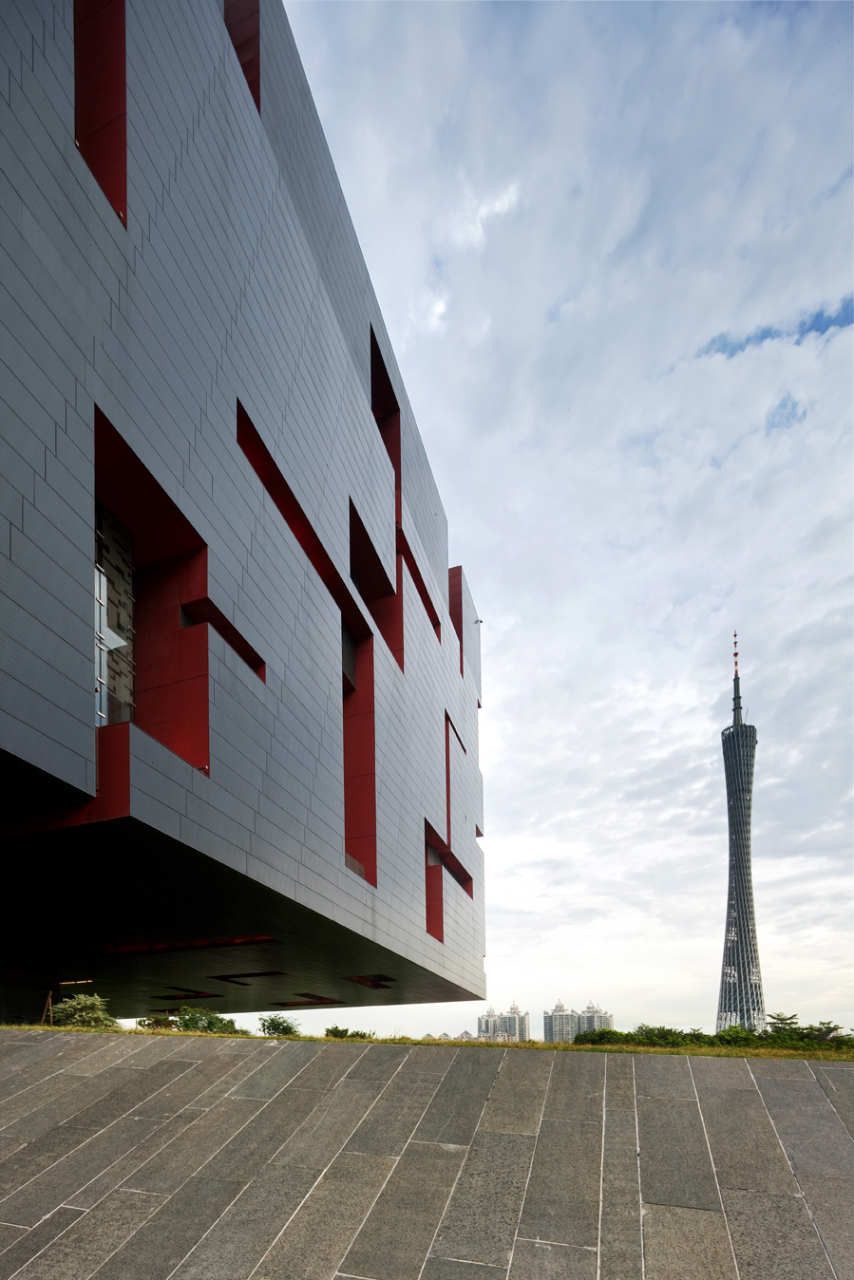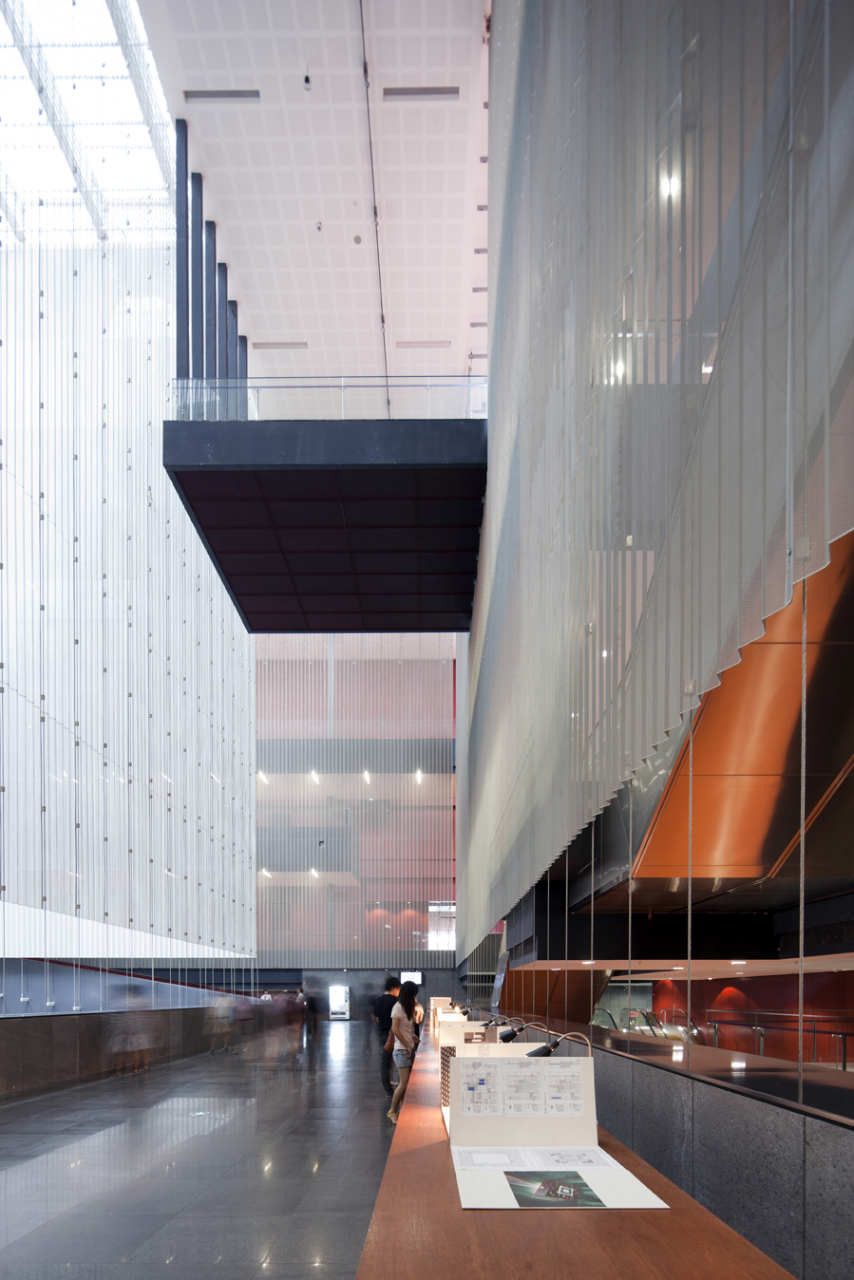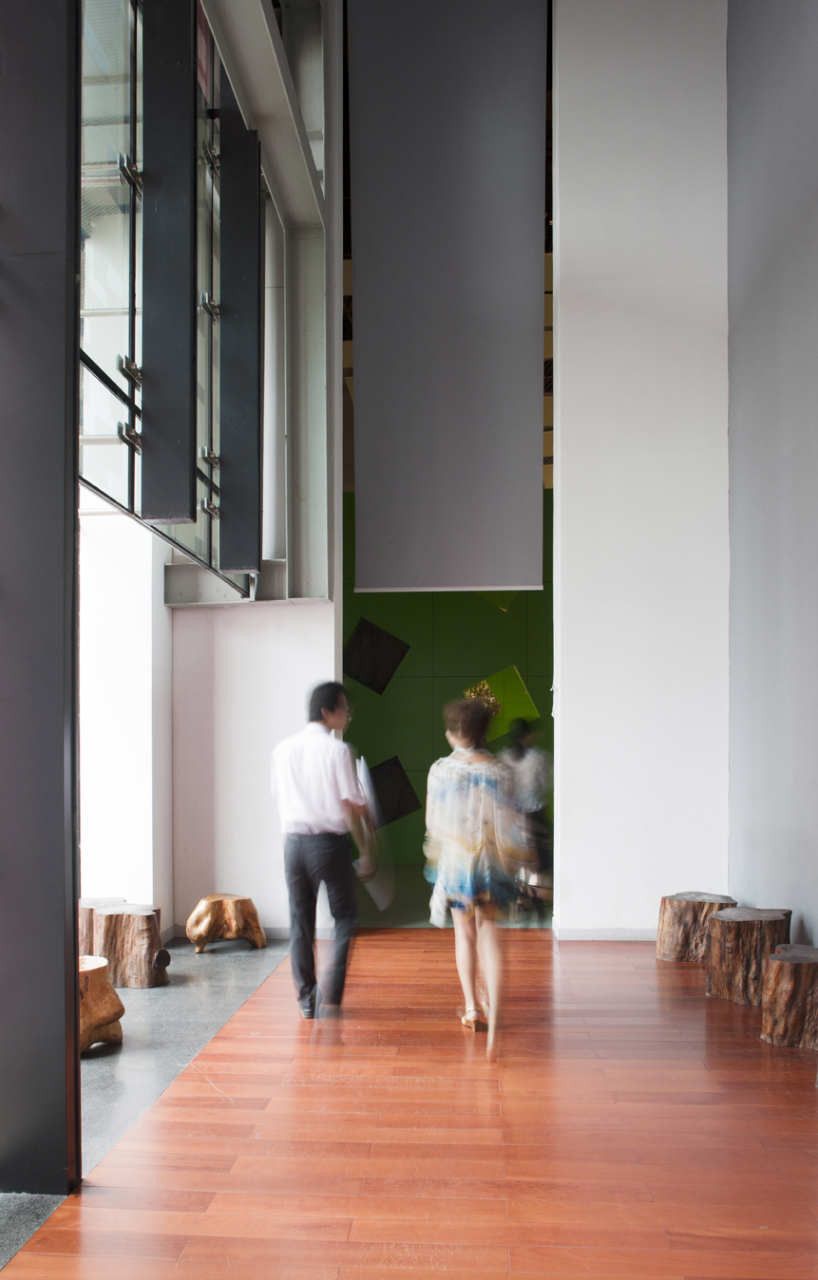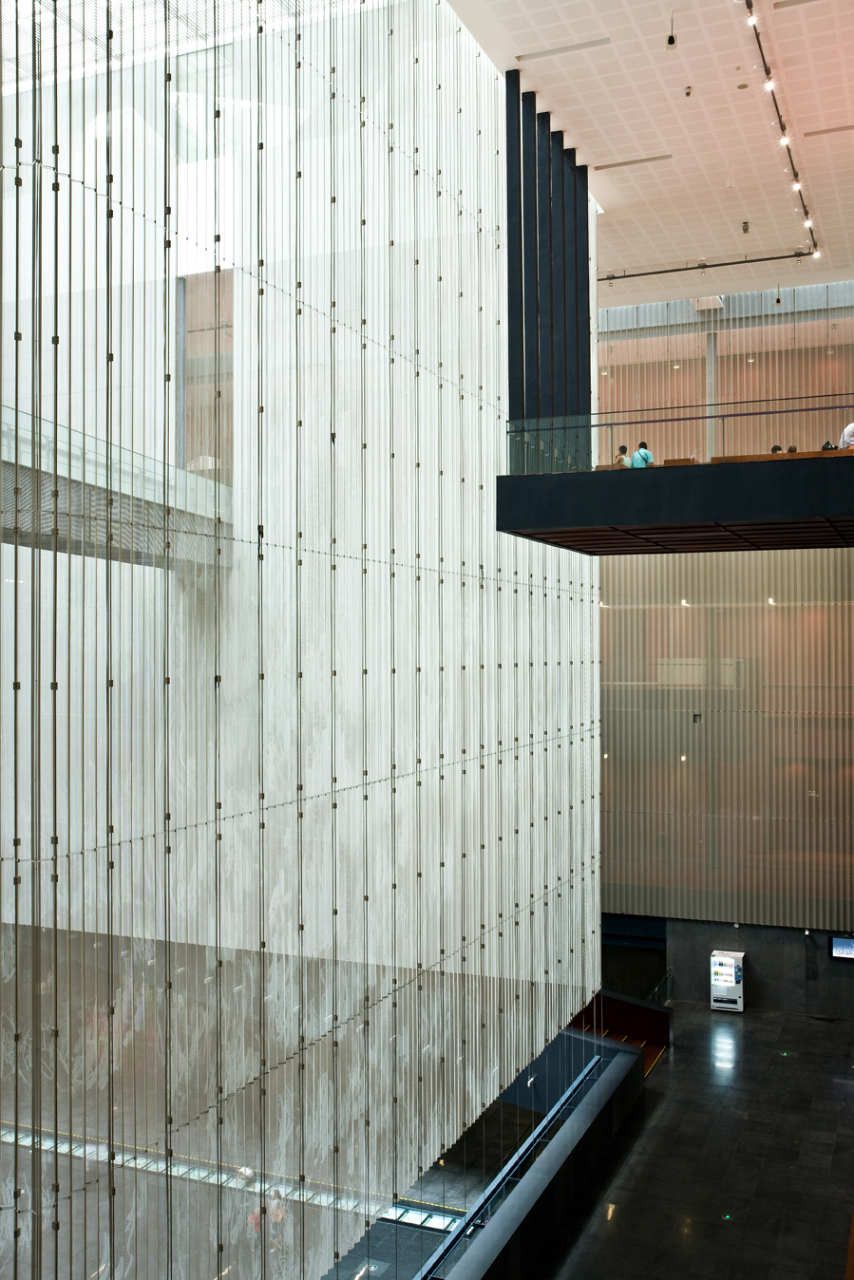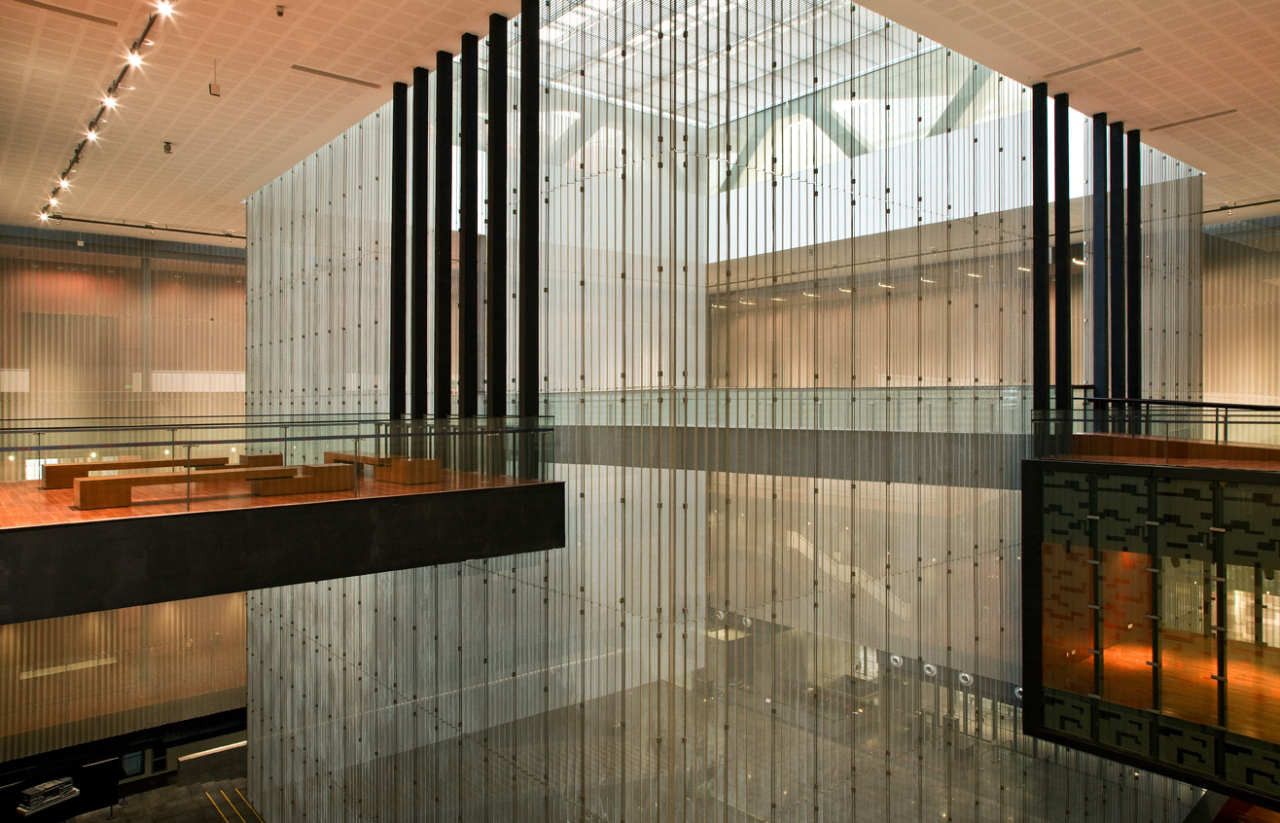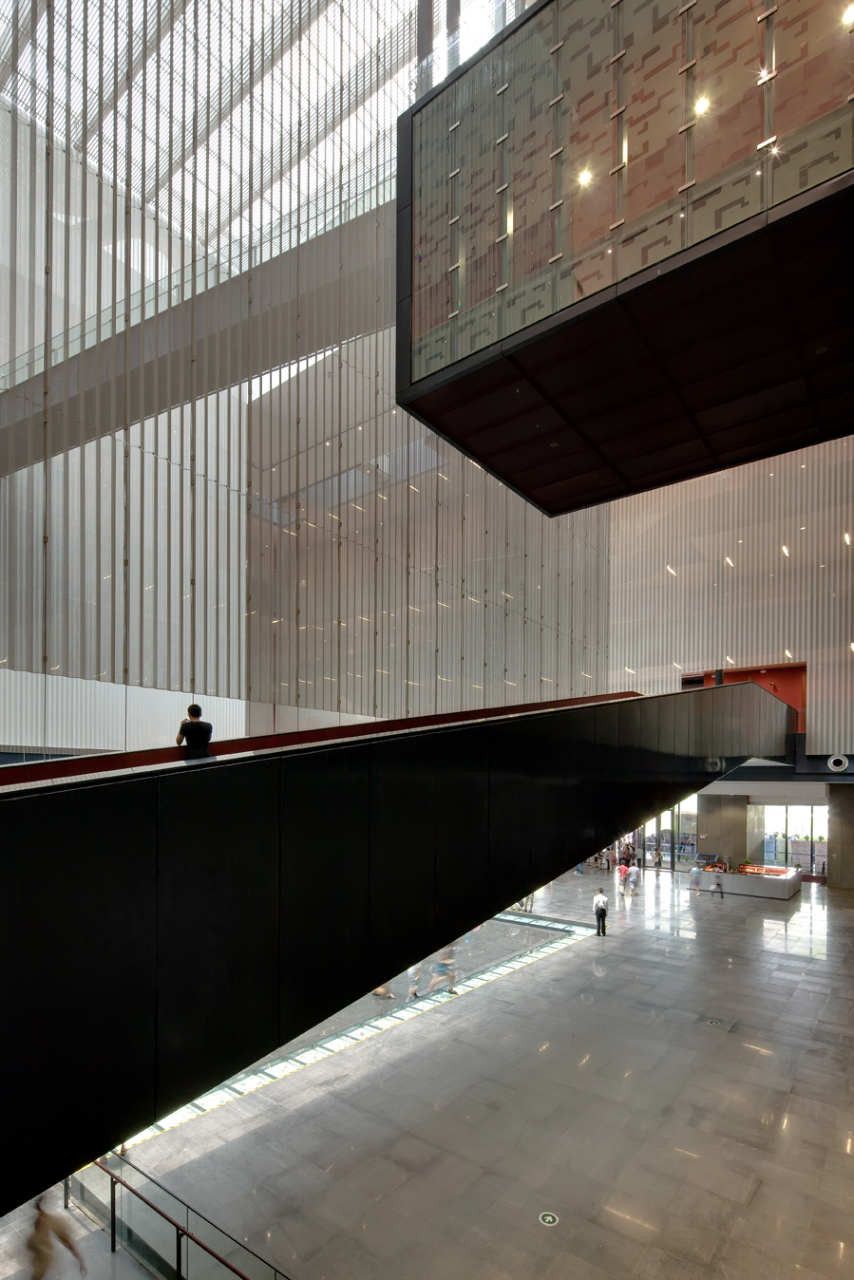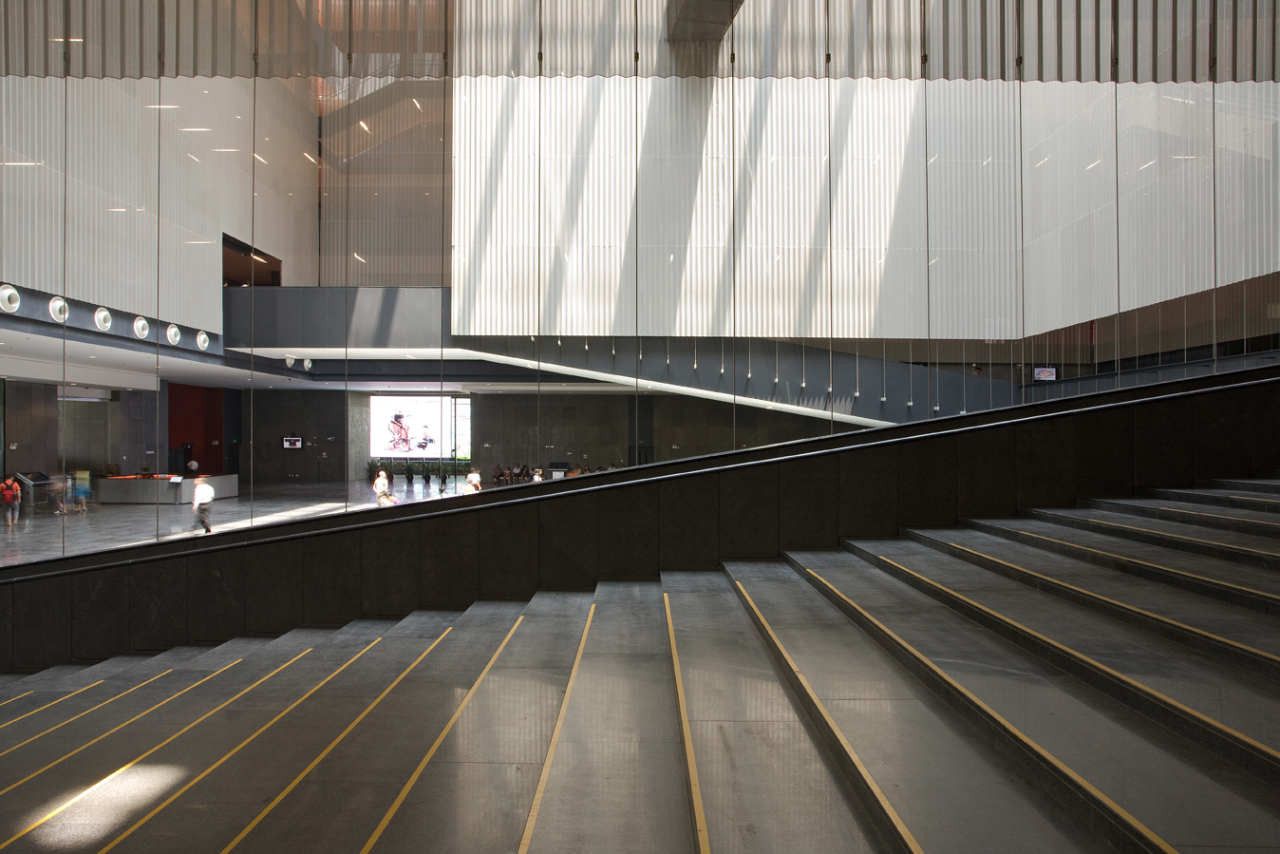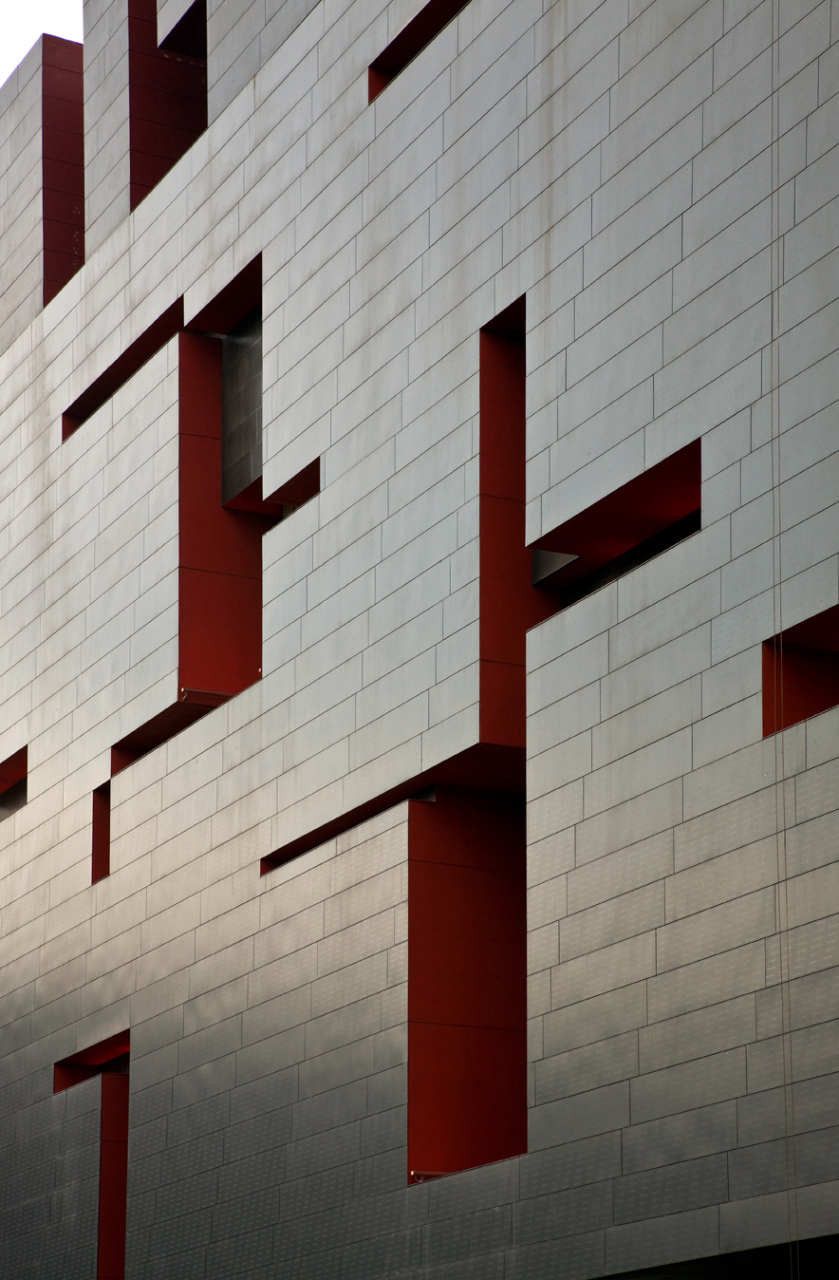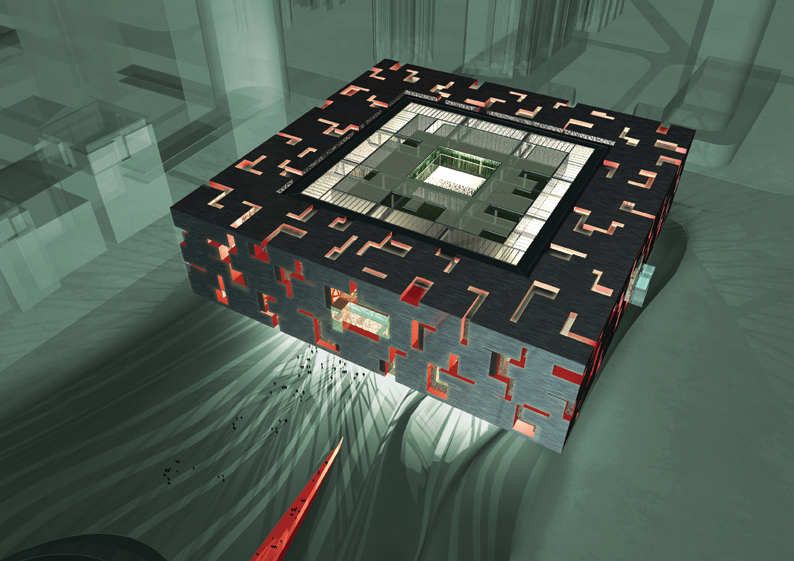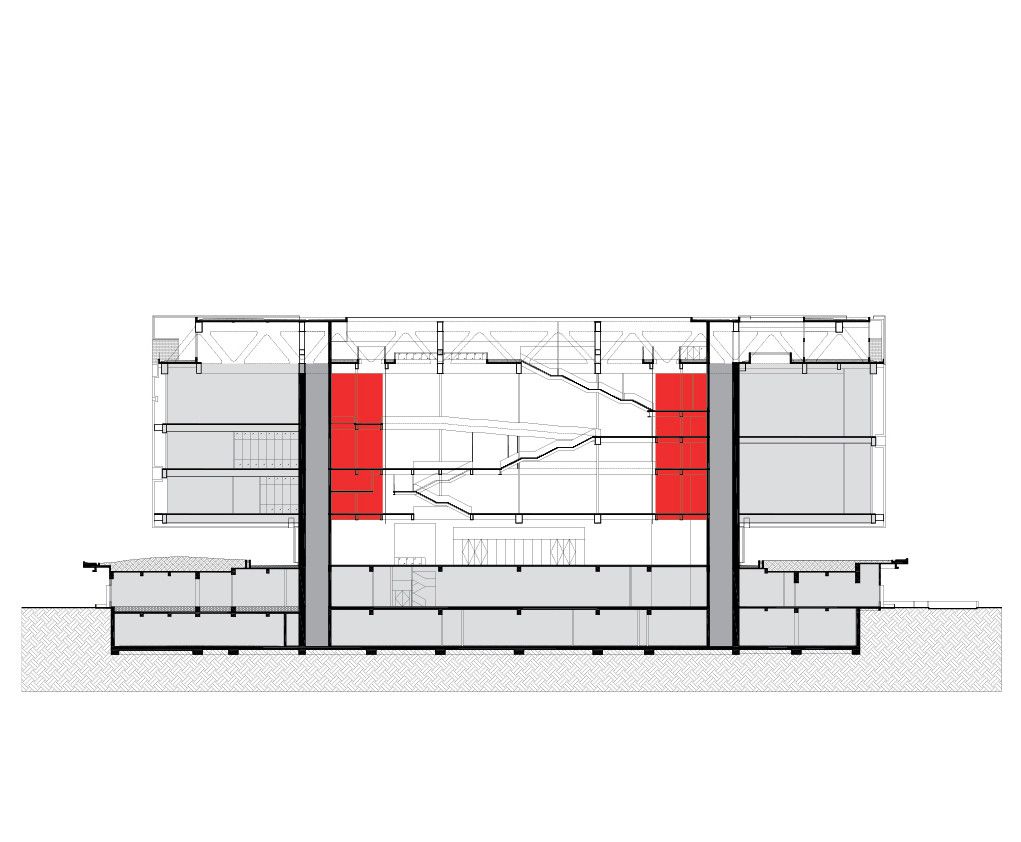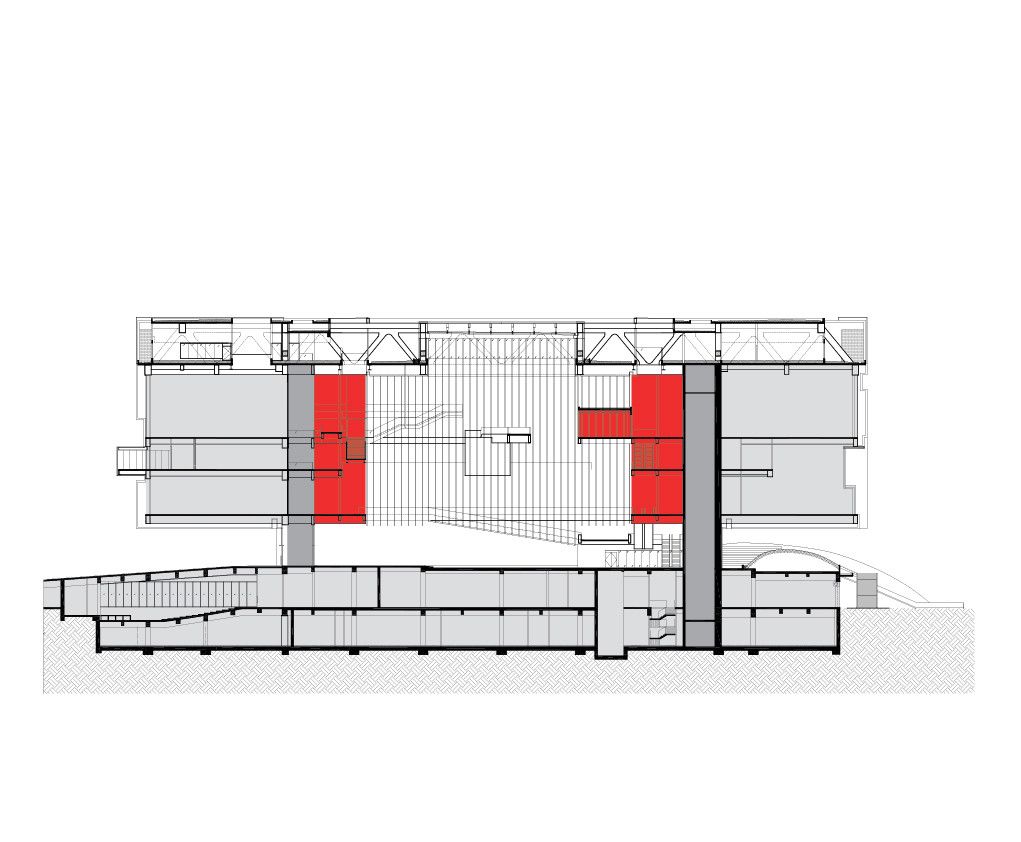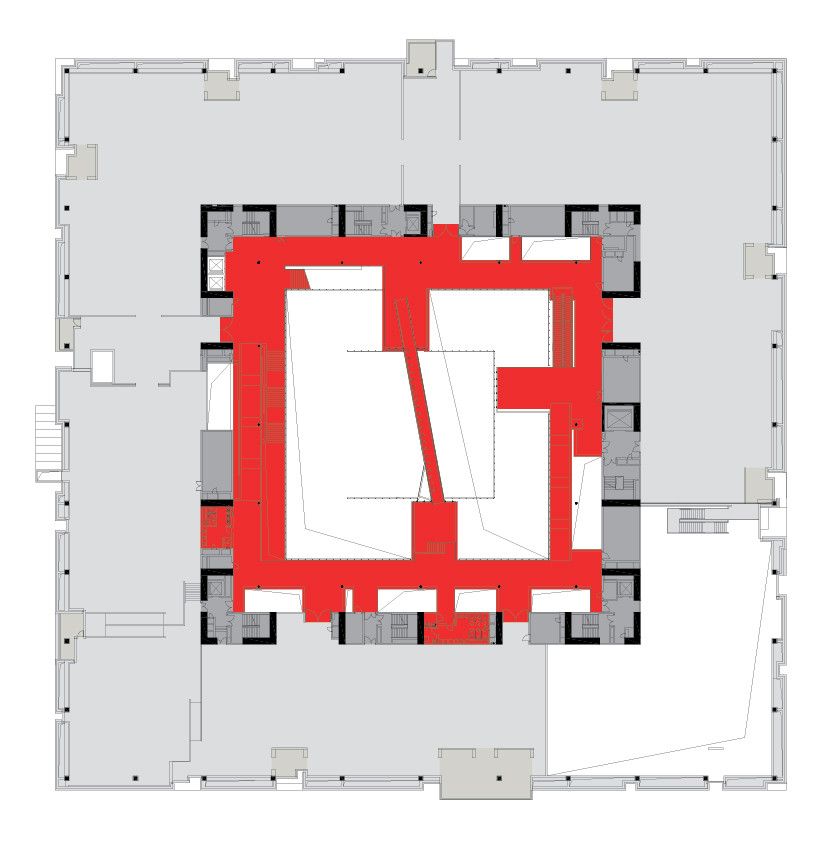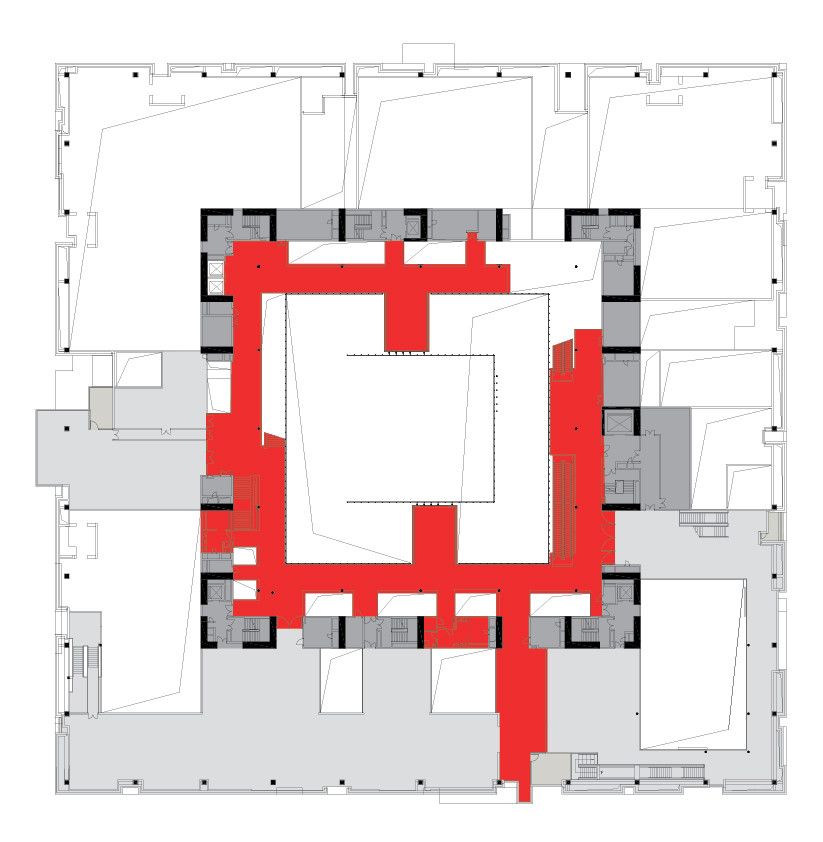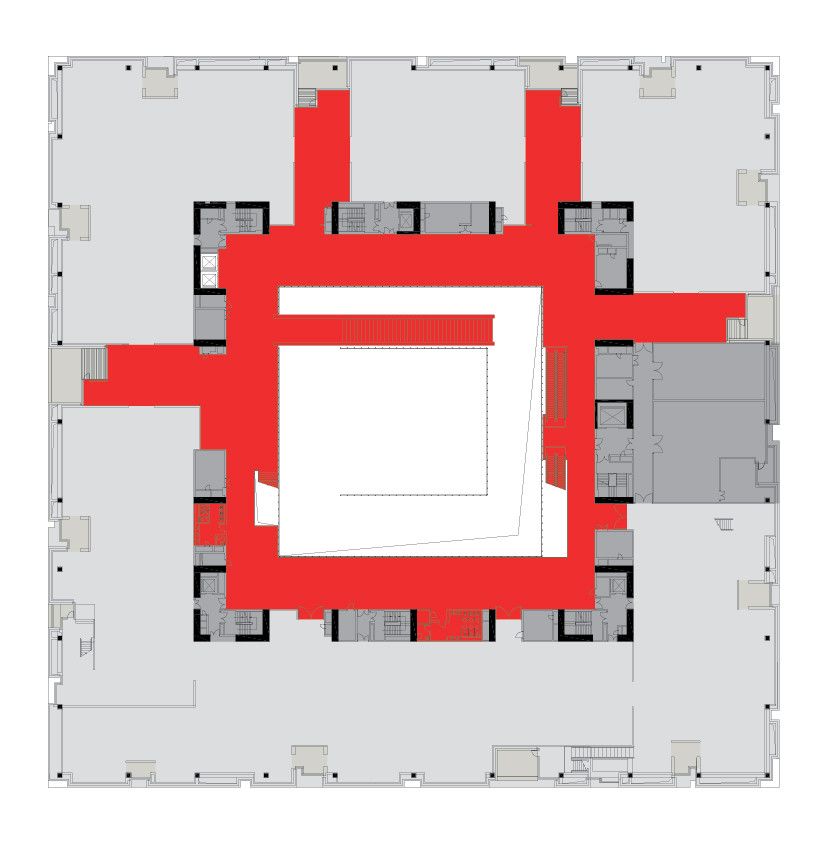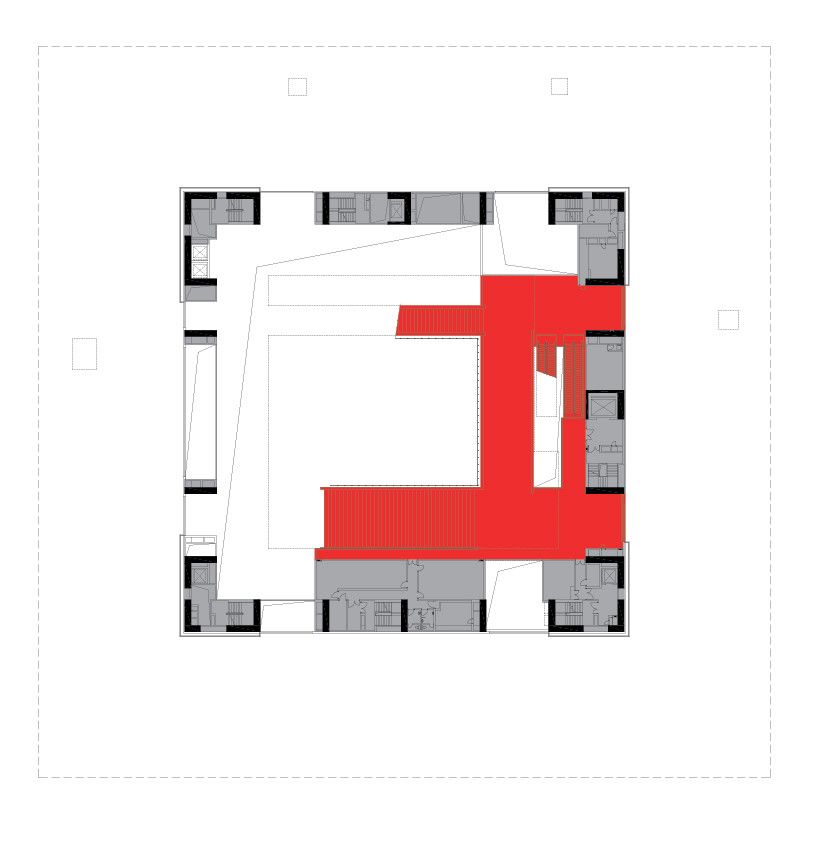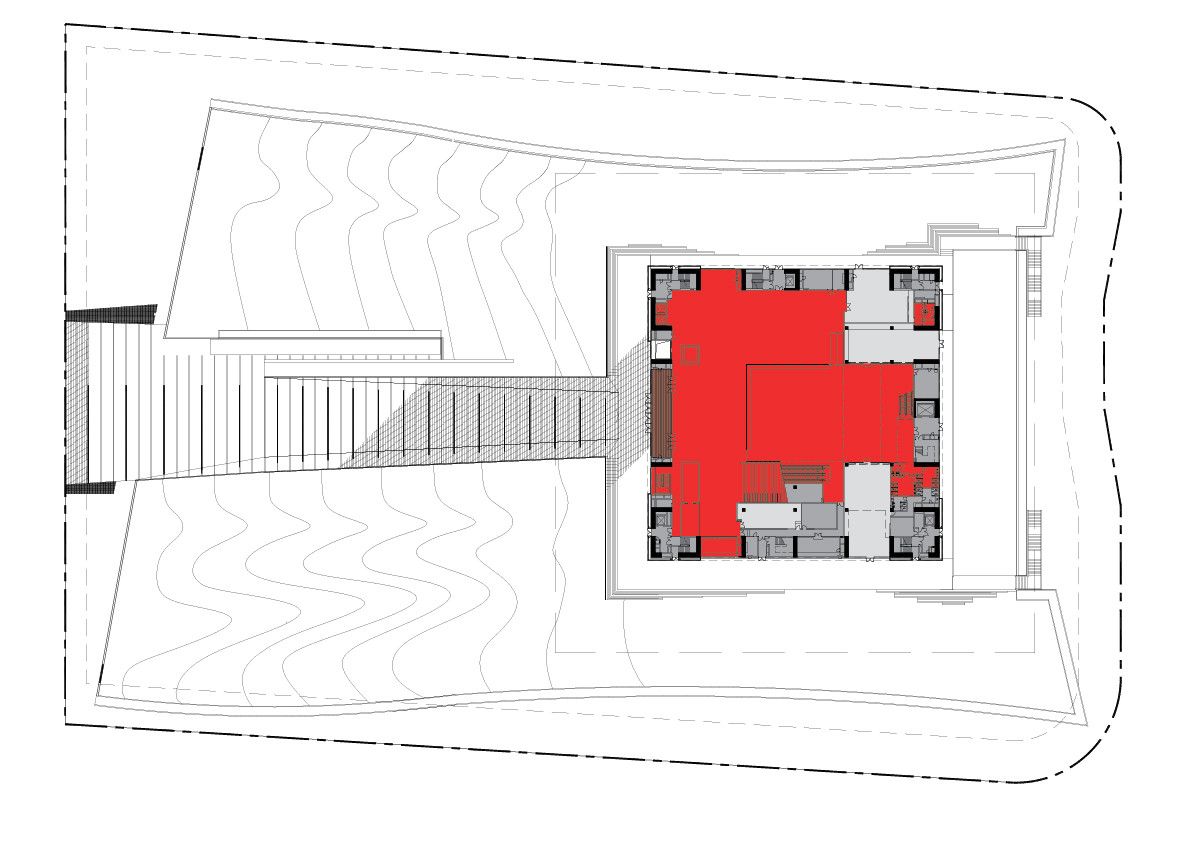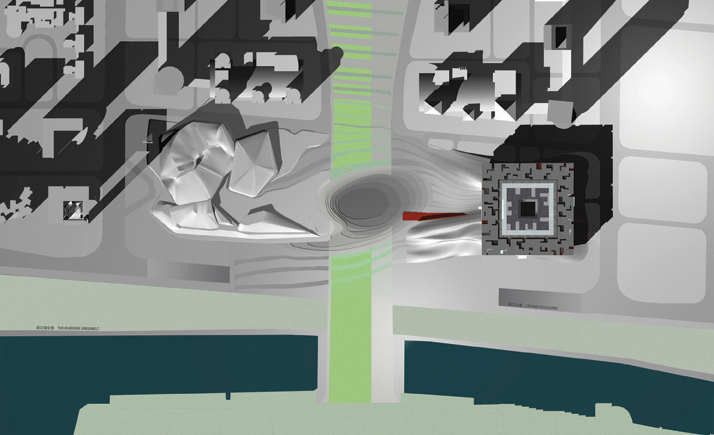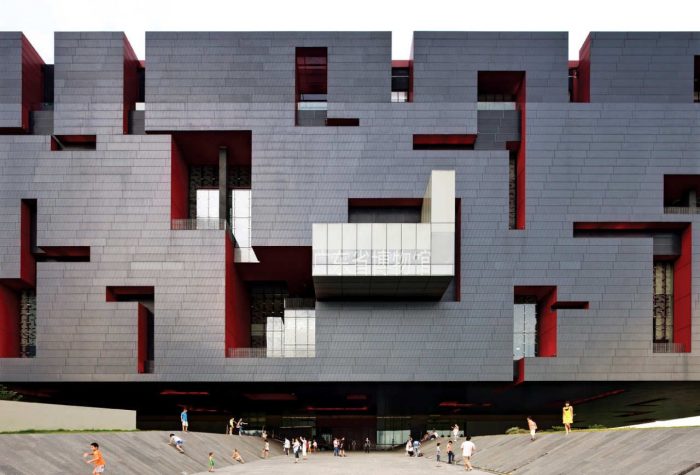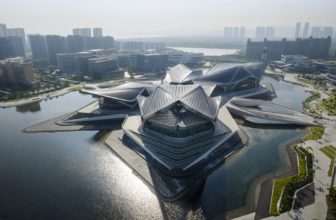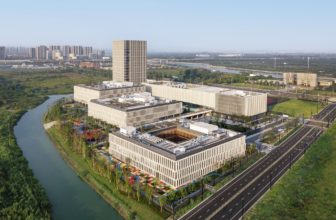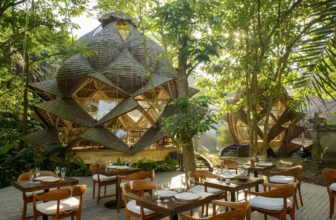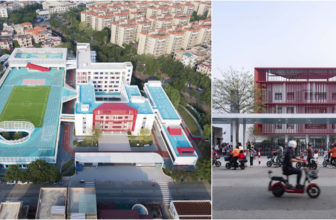Monolithic and somewhat imposing, the Guangdong Museum designed by Rocco Design Architects is conceived as one of four major cultural buildings in the new financial hub in Zhujiang Xincheng (Pearl River New Town) of Guangzhou, China.
It is designed around inspiration from ancient Chinese artifacts such as the lacquer box, ivory ball, jade bowl or and bronze tanks, whose intricacies are translated and abstracted to form a museum that not only holds treasures from the past but is, itself, one. Through this is is planned to create an identifiable icon for the city which gives memorable experiences and education to the surrounding city and those who visit it.
The facade is carved away as if by an extremely accurate chisel, to differing depths within to reveal layers of the interior program. Space within is delineated as a series of ‘pockets’, reinforcing and clarifying the theme of ‘museum as treasure-box’. This set-up allows flexibility and versatility in the arrangement of exhibits and shows throughout the volume. Between these ‘pockets’ soaring walkways, literally hanging within the space from tensile columns, guide visitors through the vast open space of the main atrium space. This space, with the breaks and voids of fritted glass set into the facade of aluminum and GRC panels, is filled with natural light, creating a transitionary zone between exhibition spaces, offering museum-goers with well-balanced resting spaces.
